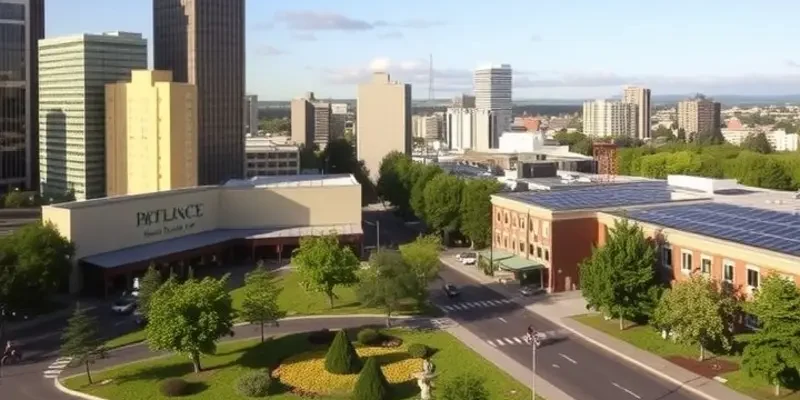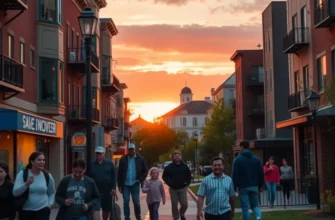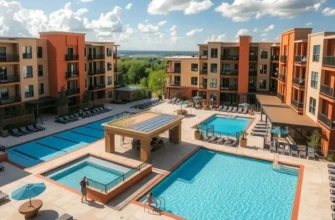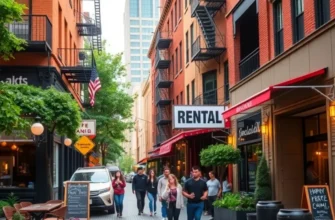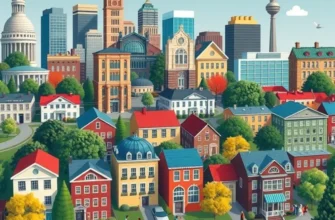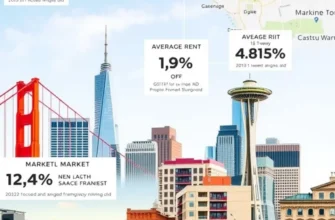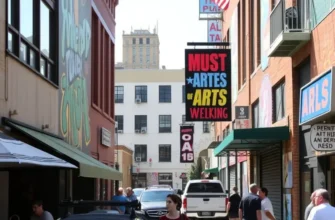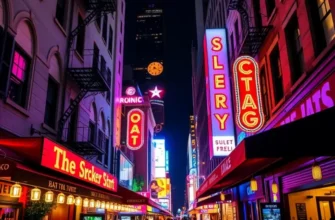Navigating the rental market can be daunting, especially for young professionals, students, and families looking for eco-friendly living spaces. As awareness of environmental issues grows, many cities across the U.S. are stepping up to create greener, more sustainable environments for their residents. From pedestrian-friendly neighborhoods to energy-efficient buildings, these eco-friendly cities not only offer affordable and desirable living spaces but also contribute positively to the planet. Whether you’re a couple starting out, a student hungry for knowledge and adventure, or a mobile professional seeking a vibrant community, finding a sustainable rental market can enhance your lifestyle while aligning with your values. This guide will explore key U.S. cities known for their eco-friendly initiatives and major developments in sustainable living, equipping you with practical tips for settling into your new environment successfully.
Portland, Oregon: The Eco-Friendly Leader
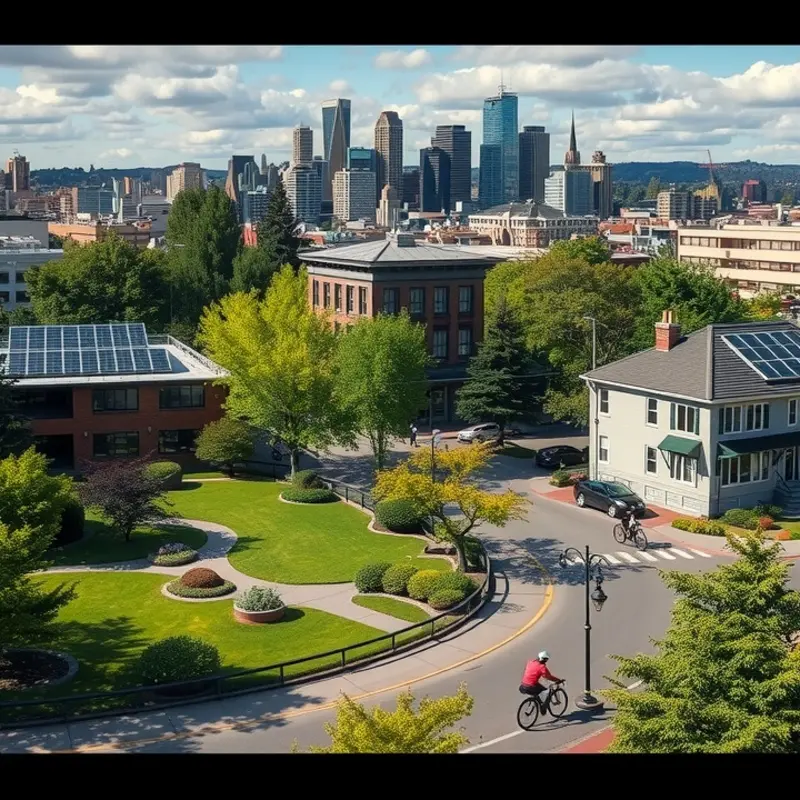
Nestled between lush forests and rugged mountains, Portland, Oregon, stands as a beacon for sustainability in urban living. This eco-conscious city has seamlessly integrated green practices into its rental market, making it an ideal choice for environmentally-minded renters.
Portland’s strong commitment to sustainability is evident in its numerous green buildings certified by the Leadership in Energy and Environmental Design (LEED) standard. These properties utilize energy-efficient systems, environmentally friendly materials, and natural lighting. When searching for a rental in Portland, consider looking for apartments with these certifications to ensure a reduced carbon footprint.
The city also prioritizes public transportation, reducing the need for personal vehicles. Portland’s comprehensive transit system is powered mainly by renewable energy, cutting emissions while providing convenient options for renters. Choosing a rental near light rail stations or major bus lines can enhance your sustainable lifestyle.
Biking culture is another hallmark of Portland’s eco-friendly ethos. With extensive bike lanes and bike-sharing programs, many residents opt for cycling over driving. Renters can embrace this culture by selecting accommodations that offer secure bike storage and easy access to these lanes.
Portland’s food scene further enhances its green credentials. Locally sourced and organic foods are a staple, reducing transportation emissions tied to imported goods. Renters can partake by supporting nearby farmers’ markets or selecting properties close to urban gardens and community-supported agriculture programs.
When diving into Portland’s rental market, explore neighborhoods known for their green initiatives. Areas like the Pearl District, known for warehouses transformed into eco-friendly lofts, or Hawthorne, with its vibrant community-focused approach, offer plentiful eco-conscious options.
Finding an eco-friendly rental doesn’t mean sacrificing modern comforts. Many Portland apartments feature state-of-the-art appliances designed for low energy consumption. Consider incorporating apartment-friendly DIY cleaning products to further decrease environmental impact. For more insights, explore this guide on DIY cleaning solutions.
Lastly, connect with local sustainable living organizations. They serve as valuable resources for finding rentals aligned with green principles, offering both guidance and community support. Engagement with these groups can uncover practical tips and neighborhood recommendations that match your eco ideals.
Living in Portland provides an unparalleled opportunity to test and embrace green living. Its rental market, shaped by sustainability and community-focused practices, invites renters to partake in a progressive urban experiment in eco-friendly living. From cycling to local food markets and green-certified buildings, each aspect of life here contributes to a greener future.
Austin, Texas: Innovation Meets Sustainability
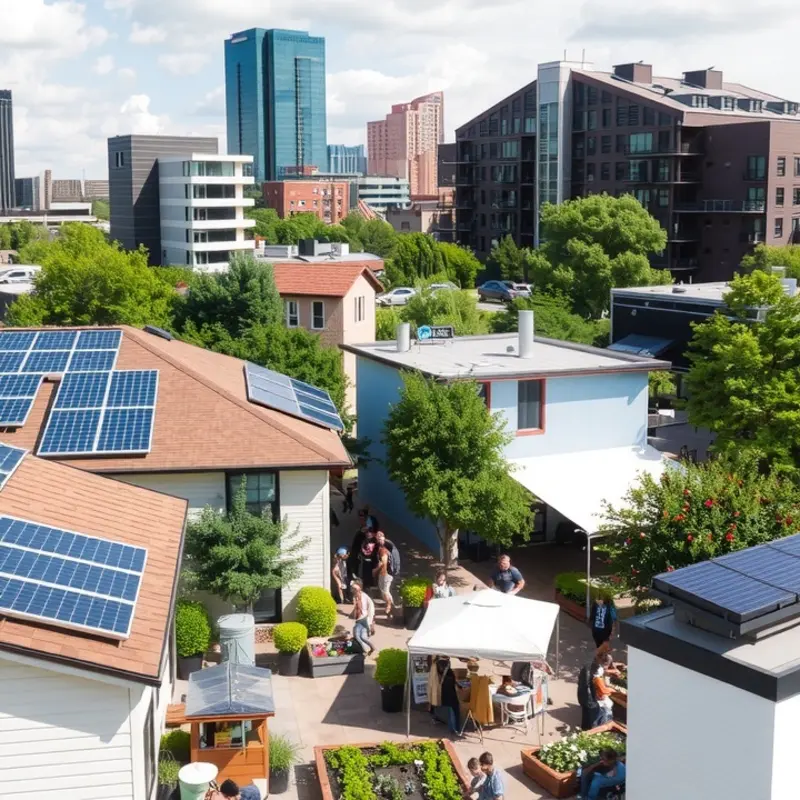
Austin, Texas, stands out as a beacon of innovation merging with sustainability, especially for renters seeking eco-conscious living spaces. As rental markets rapidly evolve, the city has embraced smart technologies to transform ordinary apartments into green havens. The commitment to integrating technology with environmental awareness offers a model worth exploring.
In Austin, sustainable living is not merely a trend but a way of life. Many rental properties now boast state-of-the-art infrastructure designed to reduce energy consumption. Smart thermostats, for example, are becoming a staple. These devices learn your habits and adjust temperatures to optimize comfort while minimizing energy waste. This is not just about reducing utility bills; it is a step towards more responsible resource use.
Additionally, smart lighting systems are prevalent in Austin rentals. These systems automatically adjust lighting based on occupancy and natural light levels. Tenants can control lights remotely, ensuring no energy is wasted when rooms are unoccupied. Together with LED bulbs, these systems contribute significantly to reducing carbon footprints.
Water conservation is another area where Austin’s rental properties shine. Smart irrigation systems, which adjust watering schedules based on weather and soil moisture, are increasingly common in complexes with green spaces. Indoor water-saving fixtures, like low-flow showerheads and dual-flush toilets, are standard in many apartments, reflecting a broader commitment to environmental stewardship.
Waste management in Austin apartments has seen a tech-driven overhaul. Some complexes have adopted intelligent recycling and composting systems, providing tenants with clear guidance on waste sorting and disposal. This initiative supports Austin’s zero-waste goal and encourages a culture of sustainability among renters.
Beyond technology, Austin’s rental market supports sustainable transportation. Many complexes have extensive bike storage, electric vehicle charging stations, and are situated near public transit hubs. This infrastructure supports a green commuting lifestyle, encouraging tenants to leave their cars at home.
For those who foster a connection between wellness and the environment, some apartments offer community gardens. These spaces provide more than just fresh produce; they foster a sense of community among environmentally conscious tenants. Gardening initiatives greatly enhance residents’ quality of life, promoting wellness and reducing food transportation emissions.
As renters weigh the benefits of smart and sustainable living, financial considerations are paramount. The integration of these systems can lead to lower utility costs—a significant advantage for eco-friendly yet budget-conscious individuals. For a deeper dive into financial planning for renters, explore this resource offering guidance on balancing eco-conscious upgrades with budgetary constraints.
Ultimately, Austin exemplifies how technology and sustainability can intertwine to create rental spaces that not only meet the needs of the present but also contribute to a more sustainable future. As renters in Austin continue to push for greener living spaces, the city’s integration of smart technology serves as an inspiring model for other urban centers across the nation.
Final words
As you embark on your journey to find the perfect rental, consider choosing one of these eco-friendly cities that prioritize sustainability and green living. With numerous options available, from urban dwellings in Portland to tech-savvy communities in Austin, it’s easier than ever to make a choice that aligns with your values and offers a healthy lifestyle. These cities not only nurture vibrant communities but also contribute to a more sustainable future. By opting for eco-friendly living spaces, you’re not just choosing a home; you’re becoming part of a lifestyle that makes a difference in the world around you. Embrace the opportunity to live in a city that reflects your commitment to the environment and enhances your quality of life.

